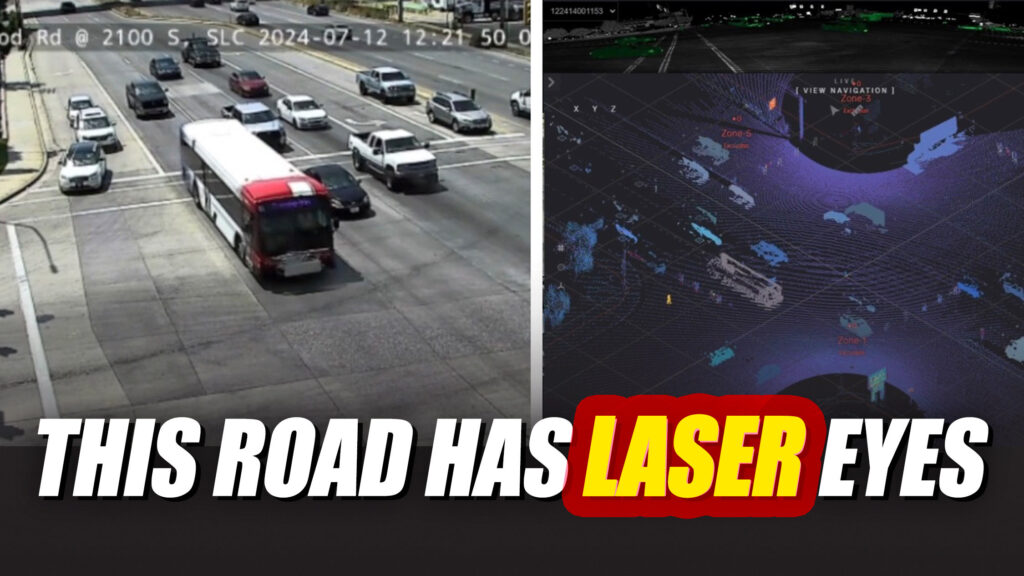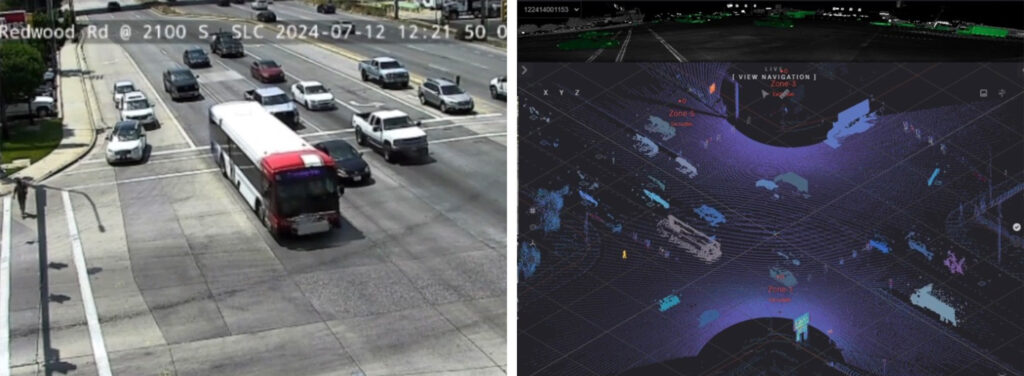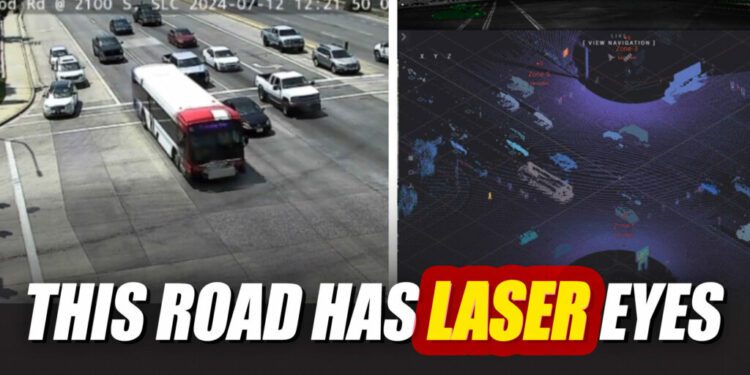The tech tracks red-light runners and near misses, but it can also extend green-light time for pedestrians if it senses they need extra seconds to cross

by Chris Chilton
8 hours ago

Utah’s DOT uses LiDAR at intersections in Salt Lake City to reduce accident rates.
Sensors detect red-light violations and near misses, optimizing intersection signal timing.
The tech can extend green lights for pedestrians in real time based on crossing needs.
You’re probably familiar with the use of LiDar technology—short for Light Detection and Ranging—in high-end cars like the Mercedes S-Class, which used the hardware to become the first vehicle capable of Level 3 autonomous driving. But now the same know-how is being deployed on roads in Utah to make intersections safer.
The Utah Department of Transportation (UDOT) has equipped five intersections in Salt Lake City with LiDar technology to record activity from pedestrians, cyclists and vehicular traffic in a bid to better understand how the accident rate can be reduced.
Related: Tesla Spending Millions On Lidar Despite Elon Musk’s Hate For The Tech
Rather than simply taking a snapshot of what happens at the stoplight line, like a simple camera might, the system maps movements across the entire intersection. That allows researchers to see patterns, such as identifying areas where near misses routinely occur, or when and where pedestrians jaywalk, something not possible previously. It can also record average speeds and logs everything with 99.98 percent accuracy.
LiDar technology works by sending out laser pulses and measuring how long it takes the light to bounce back after hitting an object. It’s like a submarine’s sonar, but more high tech.
The UDOT says the LiDar system can also help it better understand when an intersection might benefit from revisions to stoplight timing, for example to give pedestrians more time to cross. But the really smart bit is that it could be used to make those safety-critical adjustments in real time.
“[Imagine] you have somebody crossing the road and they stumble, and they just can’t make it over there in time,” UDOT spokesperson John Gleason told Fox13. “We don’t have to do anything manually, it will automatically adjust the time to allow them to cross safely.”
UDOT hasn’t revealed how much the Panasonic-developed systems cost, saying only that it will be rolled out to other locations in the state using part of a $20 million grant. But Fox13 suggests the technology is priced between $30,000-40,000.

Source link : http://www.bing.com/news/apiclick.aspx?ref=FexRss&aid=&tid=66cbf357d06749138d28dda908426f6c&url=https%3A%2F%2Fwww.carscoops.com%2F2024%2F08%2Futah-is-using-lidar-to-make-salt-lake-intersections-safer%2F&c=18050538065065902535&mkt=en-us
Author :
Publish date : 2024-08-25 04:30:00
Copyright for syndicated content belongs to the linked Source.







